I will never be a beekeeper. This is the third time I have attempted to keep bees, and the third time they have died out.
We noticed the box didn’t have any activity, and there appeared to be some dead bees at the front.
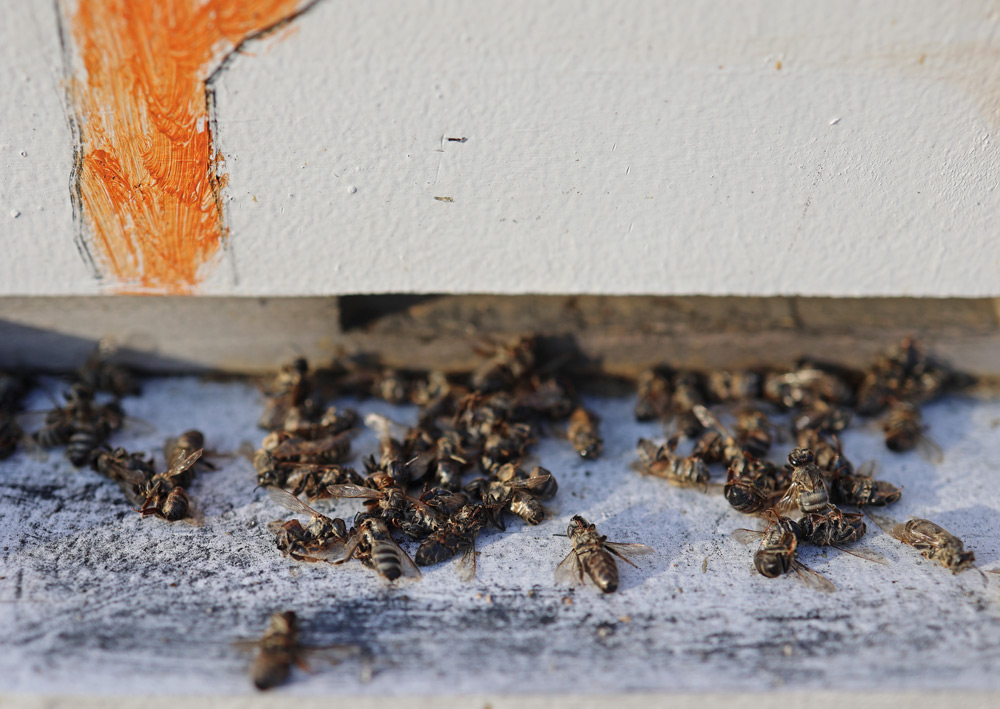
Oh. That can’t be good.
Let’s open the top and look inside.
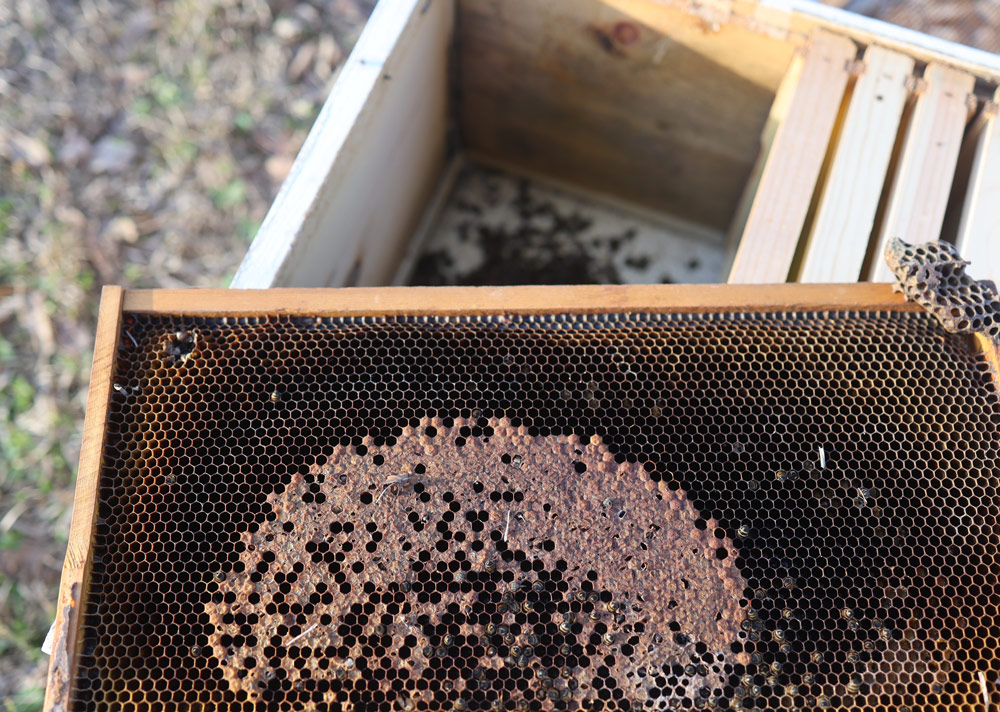
No buzzing. And no one is alive.
Let’s look closer at that comb.
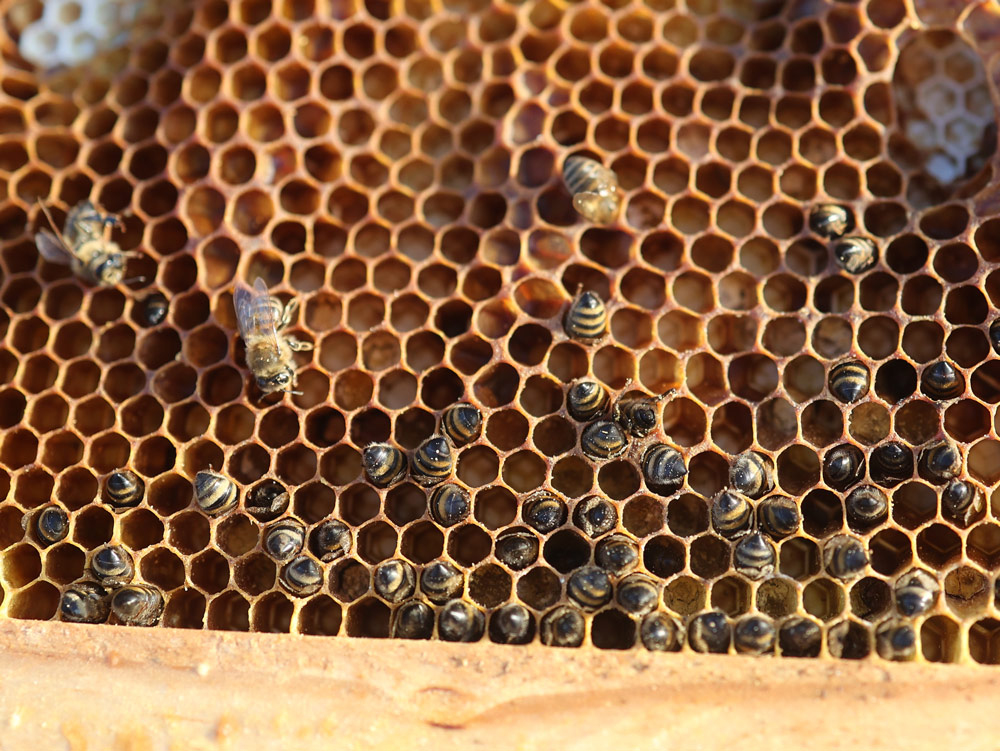
It’s like they just stuck their heads into the comb and died like ostriches.
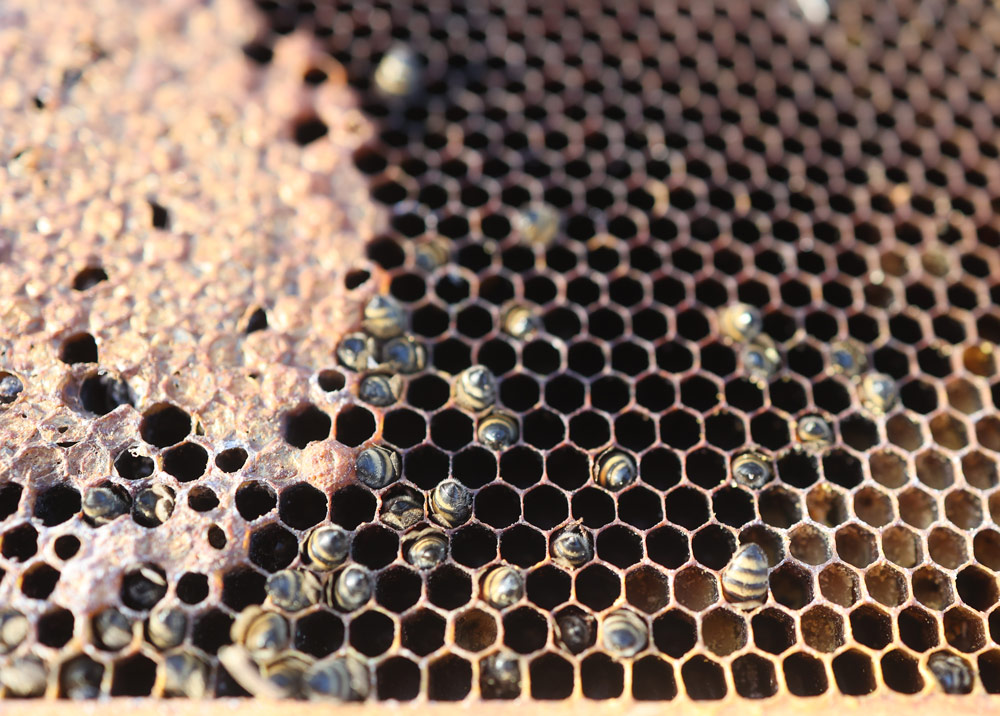
It rather reminds me of The Philadelphia Experiment.
Let’s go deeper into the box.
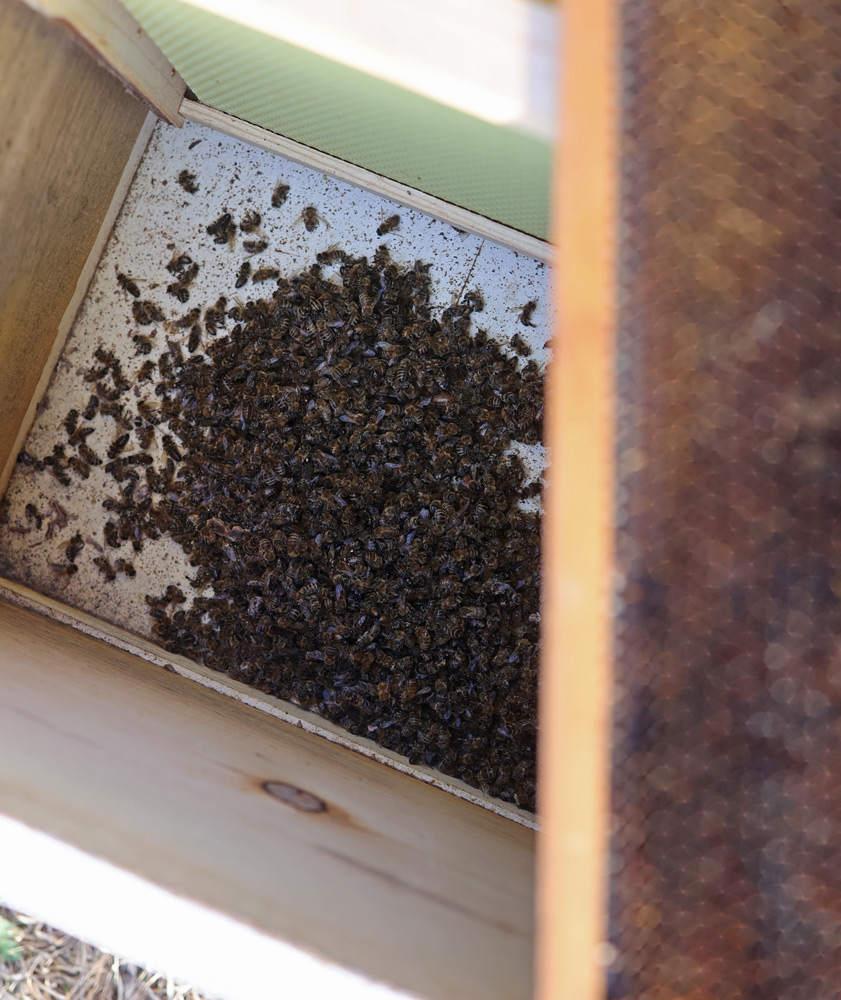
That’s the bottom we’re looking at. A big mass of dead bees.
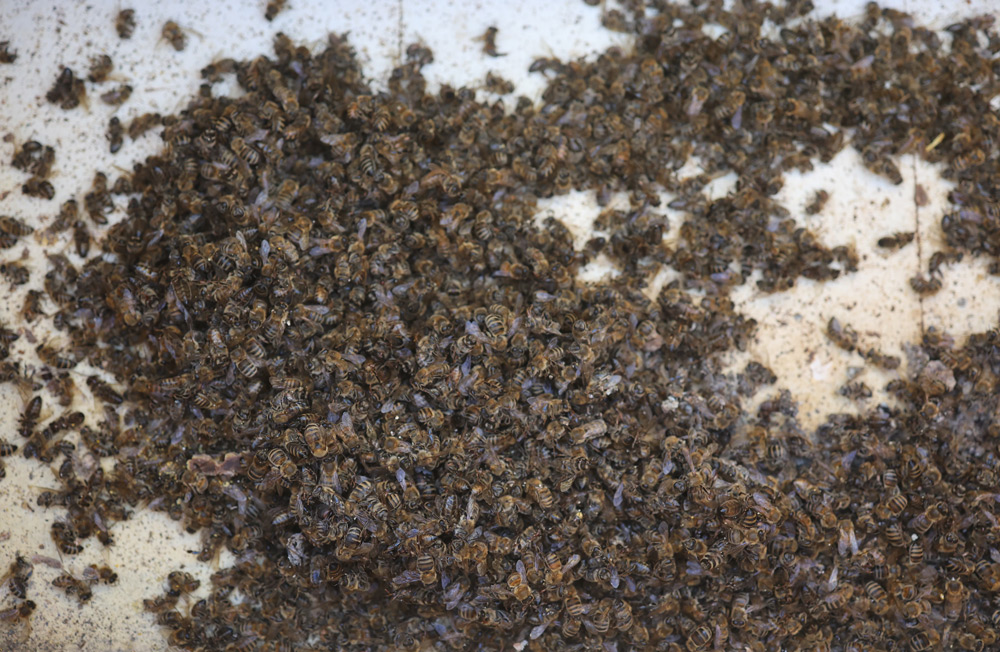
It’s bee Jonestown.
Sadly, at least one worker saw this coming.
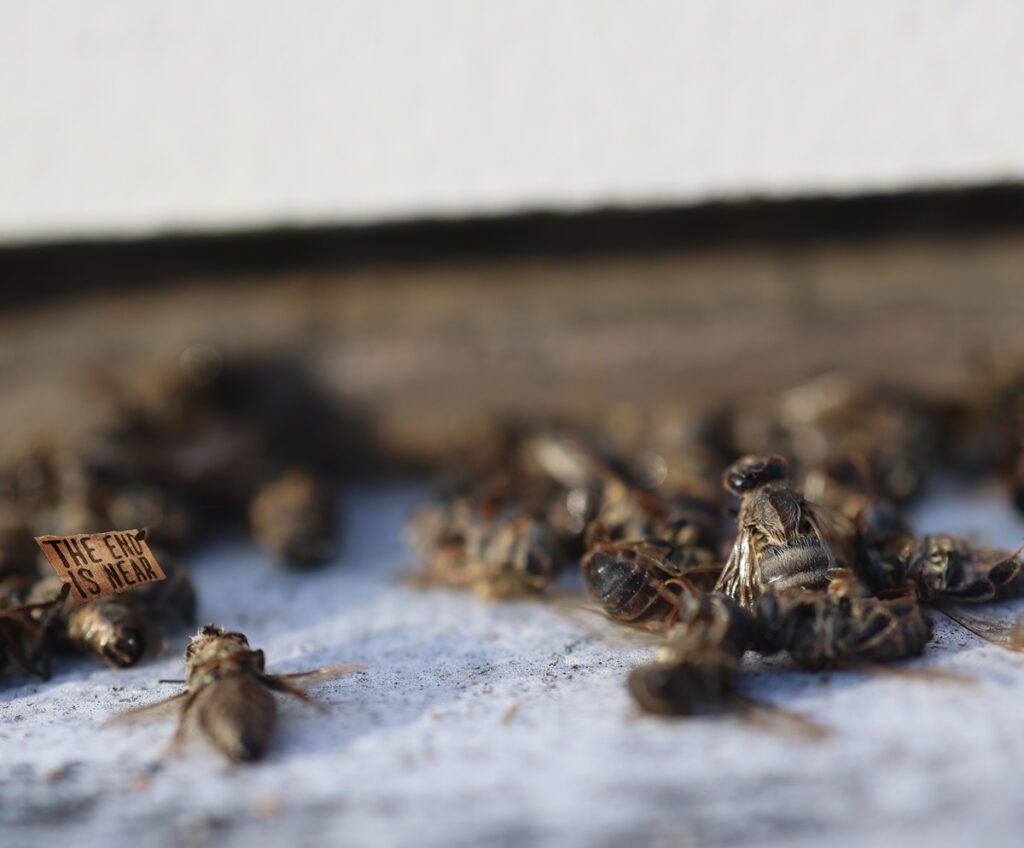
Well, I think that’s it for me and bees.
If I get them again, it will just be as a host for someone else’s boxes. The amount of input to the negative return and costs just never makes sense.
This winter, even the bees living in the wall of our outbuilding died on us. No one is home anymore. It was a weird winter, with extreme temperature swings – yet really, bees are just a pain in the neck.
Gardening is obviously my calling. If I want something sweet, I’ll just have to stick to sugarcane.

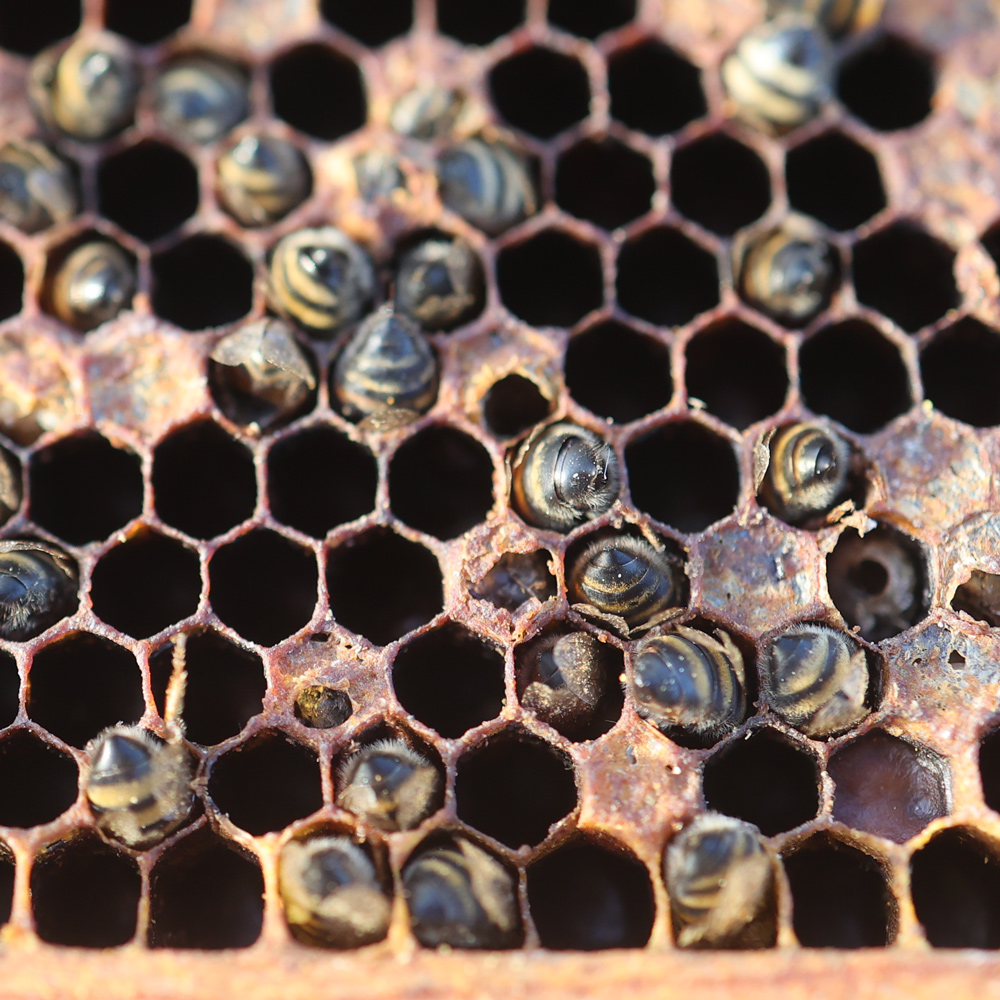
19 comments
I read the title and immediately thought this would be great as one of your songs.
So sad…
Sounds like a country song…
‘All my bees are dead again. Dead as that deer I hit on highway 10.
I was gonna sell some honey, to make a little money, and by myself a new front-end.
But all my bees are dead again.’
Oh yeah, I can hear it now.
Some random lines for this budding song lol.
“I tried several bee hives, but still failed to keep them alive”
“I started off with Langstroth, but the bees developed a cough.”
“The honey business seemed sweet, now my bank accounts in retreat”
YES
I’ve read it’s getting harder and harder to keep bees between the pests and all that, so don’t feel too bad about it.
My parents lost their bees the winter before last and the winter before that. We think they got too wet with the snow-melt, and couldn’t keep warm enough. Got 2 pints of honey out of the combs though. $400 a pint, yum.
Last summer we built a roof for them to keep the snow and rain off the hive boxes, and just before the really bitter freeze in December this last winter we surrounded each hive with 2-inch R-10 rigid foam insulation, leaving the upper and lower entrances clear, of course.
We were glad to see that they actually survived the winter this time, and in last week’s warm spell, were even going out an coming back with pollen (from where we have no idea, there’s still nearly a foot of snow and ice on my parents’ property, and nothing visibly blooming in the snow-free valley below.)
If this week’s cold snap doesn’t get them, we may have figured out the way to keep them up where we are.
So sorry to hear about your loss. Bee keeping has its share of challenges for sure.
We are in the dead bee club with you.
Maybe a low budget low maintenance bottle hive would work out better.
Wondering if your bees drank some poisonous nectar , or contaminated flowers. Heard that some wild flowers (example Yellow Jessamine) are toxic to honeybees.
I think they were just a weak swarm and the winter did them in. It was brutal.
I’m sorry to hear that. I’ve heard that honey bees attracted out of the wild are a bit hardier, but I’ve yet to try that myself (although, with those bees in the wall dying, it might not have worked anyway). I know the beekeepers in my area have also been experiencing a lot of trouble.
David, that looks like a freeze-kill to me. I’ve been keeping bees since 2012…lost a ton over the years, but have it “down pat” pretty good now. I’m in zone 7b/8a (right on the fall line) in the lower piedmont area of Georgia kinda’ near Augusta. Feel free to email me if you’d like a bit of mentorship, it’d only be repaying you for all that I’ve learned from your YT channel and daily blogs. It’s often said that bees found with their heads stuck in the cells that way were also starving. So with that in mind there are two things: 1. Hive configuration (top ventilation) 2. Feeding 2:1 sugar syrup.
At the height of mine and my brother’s beekeeping endeavors we thought we would make a business out of it (and we did for a while) and maintained forty hives over four apiaries in our county. We’ve found that literal hive component configuration has been essential to easy beekeeping for us (we’ve decreased our hive numbers to just five in the last two years). The entrance at the bottom board should be small–one square inch is more than enough even for boomer hives–, and there really needs to be top ventilation (covered by a piece of 1/8″ mesh hardware cloth) especially in the winter time. This keeps the bees from getting soaked by their own respiration-created condensation that accumulates on the inner/outer cover.
Feeding–we try to leave a full super of honey on each hive going into the winter. Bees here starve in March, just before our nectar flow starts in earnest (mid-April, usually, but beginning a bit earlier this year…kinda’…weird bloom times in 2023) so it’s important to really check their stores in March (probably sooner in 8b). IF they aren’t left anything to overwinter with, you need to try and get them to put back four gallons of 2:1 sugar syrup before the cold weather really begins. If you can’t do that, then feed them through winter. We like to use the in-hive 1-gallon frame feeders to do that. We haven’t had to feed for the last few years, though, because we always leave them a super and that JUST does get them through.
Our general hive configuration is this: Bottom board, deep box, medium super, notched inner cover, migratory outer cover. Anything above their super is ours, but we try to send them into winter in the above configuration (we reduce them to that size after the fall flow). Sorry this has gone long! I would be very happy to talk apiculture with you. Shoot me an email!
p.s. You got me to plant some sugar cane…just noticed it coming up in my grocery row garden. Blue ribbon
Looks like starvation to me.
Quite possibly. They really weren’t growing in number, either.
Oh, no!
Comments are closed.